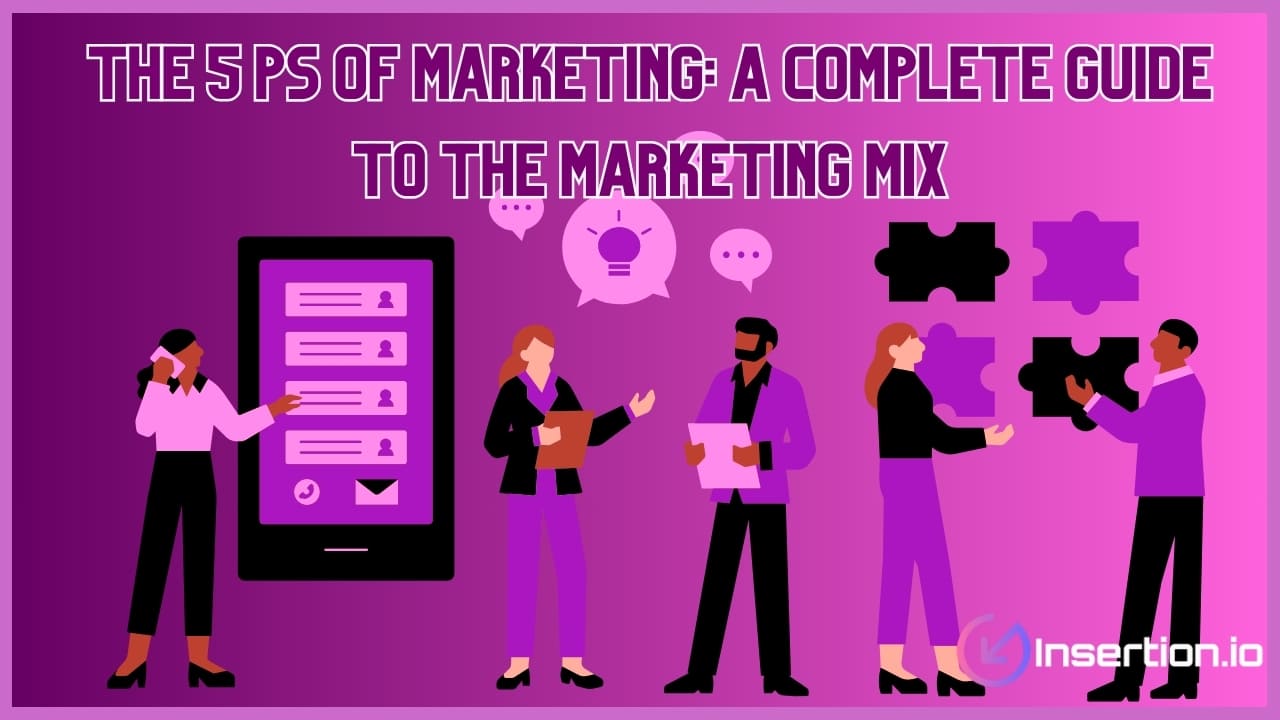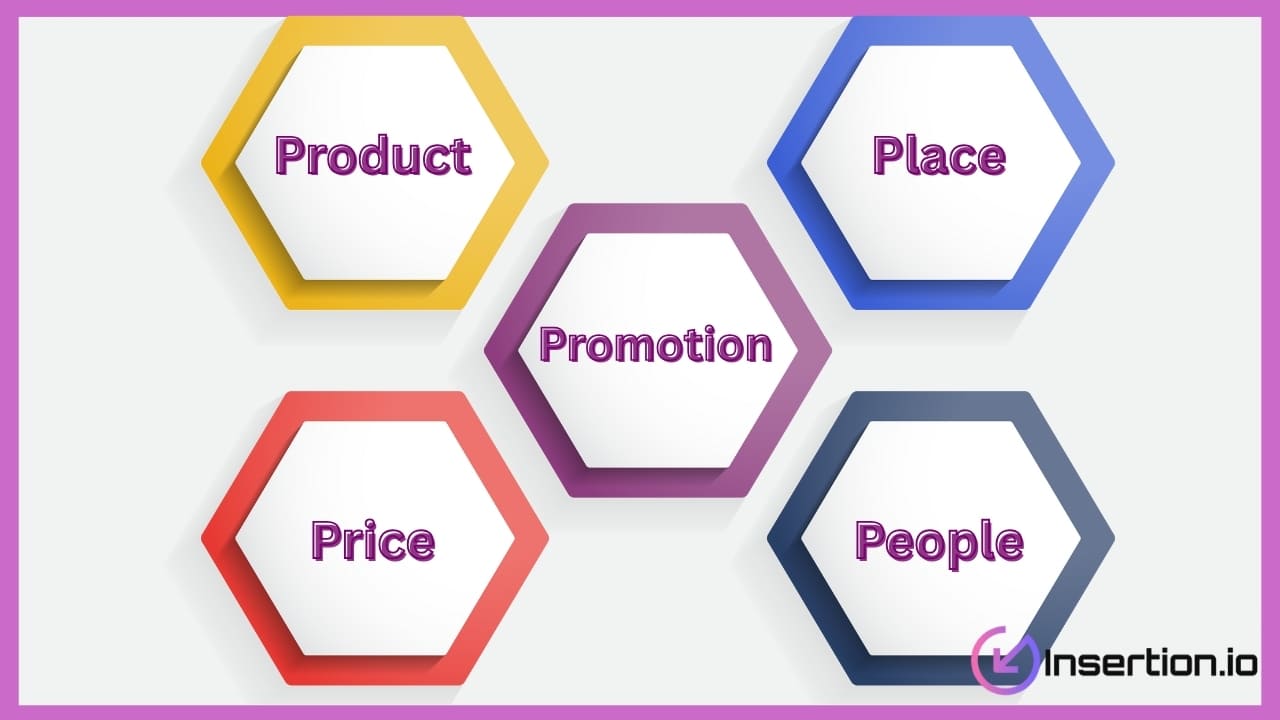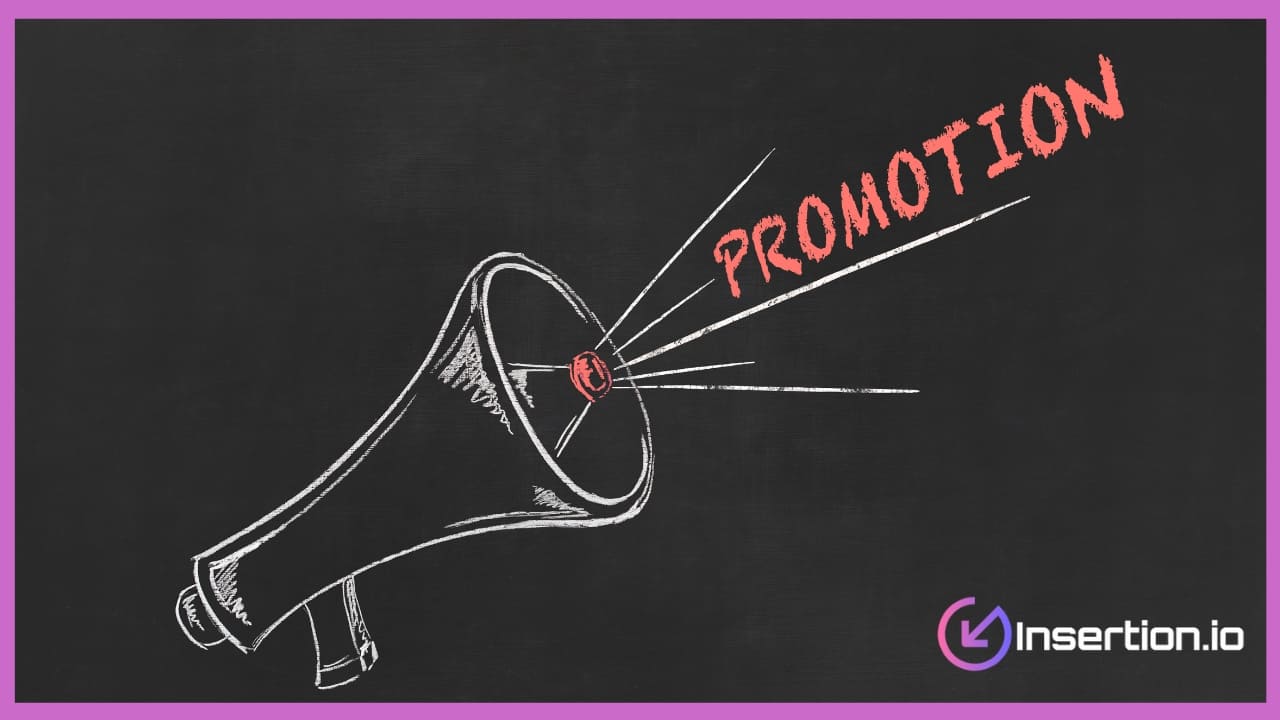
Many businesses struggle because their marketing strategies lack alignment, causing inconsistent messaging and wasted effort. Marketers have relied on the marketing mix since the 1940s to guide their decisions. Modern marketing demands a deep understanding of the 5 Ps of marketing: product or service, pricing, promotion, place, and people.
This guide offers a comprehensive guide to refine your marketing plan by aligning your product or service, perfect price, promotional strategies, distribution channels, and human elements. You’ll improve customer experience, build brand awareness, and craft a perfect marketing campaign outlined in this article.
What are the 5 Ps of Marketing?
The 5 Ps of marketing represent five core components that shape a strong marketing strategy. They include product or service, pricing, place, promotion, and people, each influencing how businesses and brands market their products and services effectively. A marketer uses this PS framework to refine marketing efforts and build brand awareness across different distribution channels.
For instance, pricing strategies must align with perceived value and what customers are willing to pay. Similarly, promotional strategies like content marketing, influencer marketing, public relations, and SEO resonate with the target audience. Altogether, the marketing mix ensures effective marketing and customer satisfaction.
The 5 Ps of Marketing

The 5 Ps of marketing represent five components within the marketing mix that help businesses and brands align their marketing strategies, pricing strategies, promotional strategies, and distribution channels to build brand awareness, improve customer satisfaction, and ensure successful marketing efforts.
1. Product: What you’re selling:

A product or service is the foundation of the marketing mix ps because it determines how businesses market their products and services to customers. A marketer must create a product that resonates with the target market and addresses specific needs. High-quality products or services build brand awareness and foster customer satisfaction while ensuring the company offers its customers something valuable. Products can be a digital product, physical evidence in a brick-and-mortar store, or offerings on online marketplaces. Businesses must refine features, tailor the product and address any issues, and ensure the product is available at the right time and place to persuade customers.
2. Price: The amount you’re asking for it:

Pricing within the 5 Ps of marketing refers to finding the perfect price that balances perceived value and what customers are willing to pay. Pricing strategies should align with the target audience, payment options for your business, and delivery to the customer. A marketer must find the sweet spot between a price that is competitive and one that maximizes revenue. Moreover, businesses and brands should use marketing tools and customer data to refine pricing strategies accordingly. Evidently, pricing isn’t only about cost but also about aligning with customer experience and perceived value to enhance your marketing and boost long-term success.
3. Promotion: Getting the word out there:

Promotion refers to the promotional strategies businesses use to persuade customers and build brand awareness through a perfect marketing campaign. Marketers employ influencer marketing, public relations, B2B SEO strategy, content marketing, and digital marketing strategies to tailor the right message for their target audience. Promotional efforts ensure products or services are easily accessible and available in the marketplace. Additionally, promotional campaigns must correspondingly align with the overall marketing plan, ensuring strong marketing strategy outcomes. Businesses and brands can enhance their marketing by adopting modern marketing tools and refining the marketing mix to resonate with their target market effectively and consistently.
4. Place: The Path to Market:

Place refers to how products or services are delivered to customers through suitable distribution channels and delivery to the customer. It ensures the product is easily accessible and available at the right time and place. Marketers must tailor distribution strategies for online marketplaces, brick-and-mortar stores, or hybrid channels to reach the right people. Moreover, effective marketing allows companies to market their products and services where customers expect them. Businesses and brands must correspondingly refine logistics and align them with an effective marketing plan. Ultimately, the place emphasizes ensuring that the product is available whenever customers are ready to make a purchase.
5. People: Those who work on the sale:

People are a crucial part of the PS framework, emphasizing the customer experience and the positive relationship between the company and its stakeholders. Employees, influencers, and marketers alike contribute to a strong marketing strategy by aligning efforts to build brand awareness. People refine messages, tailor promotional strategies, and persuade customers that the brand’s products or services resonate with their target audience. Furthermore, people enhance your marketing by ensuring delivery to the customer is smooth, payment options for your business are convenient, and concerns are addressed. Consequently, people represent the human factor that drives successful marketing and customer satisfaction.
How To Use the 5 Ps of Marketing Effectively
Tailor the Product or Service to Your Target Audience:
A product or service must resonate with the target audience and address specific needs. Businesses should refine offerings, ensure the product is available at the right time and place, and deliver high-quality solutions. This approach persuades customers, builds brand awareness, and ensures products remain easily accessible across multiple distribution channels.
Find the Perfect Price and Sweet Spot for Success:
Pricing strategies must align with perceived value and what customers are willing to pay. Businesses should find the perfect price that is competitive yet profitable. Payment options, accessibility, and delivery methods significantly influence customer experience. Eventually, effective pricing resonates with your target audience, ensuring successful marketing and long-term customer satisfaction.
Use Promotional Strategies to Build Brand Awareness:
Promotion requires tailoring the right message for the right people using diverse marketing strategies. Influencer marketing, SEO, public relations, and content marketing help build brand awareness effectively. Promotional strategies must align with marketing efforts to sell your product, persuade customers, and ensure products and services remain easily accessible within the marketplace.
Ensure the Product Is Available in the Right Marketplace:
Place emphasizes ensuring products or services are available at the right time and place. Businesses must refine distribution channels, deliver to customers efficiently, and address any issues impacting accessibility. Both online marketplaces and brick-and-mortar locations matter. Ensuring availability strengthens customer satisfaction and supports a strong marketing strategy for effective marketing campaigns.
Involve People to Enhance Customer Experience:
People play a central role in the PS framework, impacting brand awareness and customer experience. Influencers, employees, and marketers contribute by refining interactions and tailoring promotional strategies. Their efforts enhance your marketing, build positive relationships with stakeholders, and ensure effective marketing campaigns that resonate strongly with your target audience and customers.
Conclusion
You’ve seen how the 5 Ps of marketing create a strong marketing strategy by aligning product or service, perfect price, promotional strategies, place, and people. By applying this holistic framework, you enhance your marketing efforts, boost customer satisfaction, and support successful marketing campaigns. This comprehensive guide allows you to refine your digital marketing strategies, tailor messages for the right people, and ensure your product is easily accessible in the right marketplace. Altogether, the marketing mix supports businesses and brands in building brand awareness, improving their marketing, and resonating with their target market. Which P will you focus on strengthening first?
FAQs
What is the difference between the 4 Ps and 5 Ps of marketing?
The 4 Ps focus on product, price, place, and promotion, while the 5 Ps add people.
Why are the 5 Ps important for businesses and brands?
They provide a framework to align marketing strategies, refine efforts, and achieve customer satisfaction.
How do the 5 Ps influence customer experience?
They ensure products and services are accessible, fairly priced, well-promoted, and supported by skilled people.
Can small businesses use the 5 Ps framework?
Yes, the 5 Ps apply equally to startups, small businesses, and large corporations for effective marketing.
How does digital marketing fit into the 5 Ps?
Digital marketing strengthens promotion, expands reach, and makes products easily accessible in online marketplaces.





Leave a Comment